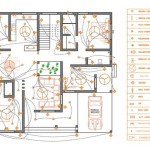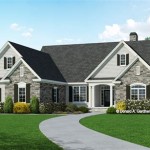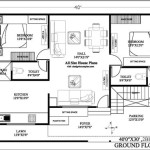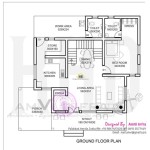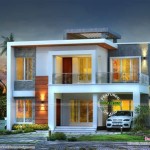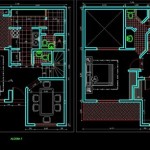Narrow Lot House Plans With Garage In Back
Narrow lot house plans offer a solution for building on smaller or uniquely shaped properties, particularly in urban areas or locations with limited space. One popular design within this category features a garage at the back of the property. This configuration offers a range of advantages and design possibilities for homeowners seeking to maximize their available space.
Positioning the garage at the rear of a narrow lot offers several key benefits. Firstly, it allows for a more visually appealing streetscape by prioritizing the home's facade and entryway. Tucking the garage away creates a more pedestrian-friendly environment and enhances curb appeal. Secondly, a rear garage often provides more privacy and reduces noise pollution from vehicles entering and exiting. Finally, it can create opportunities for enhanced outdoor living spaces, such as patios or courtyards, between the home and the garage.
Several design strategies are commonly employed in narrow lot house plans with rear garages. One approach utilizes a driveway that runs along the side of the house, leading to the garage at the back. This maximizes the usable space on the lot and minimizes the impact of the driveway on the front yard. Another option involves an alley-loaded garage, where the garage is accessed from a rear alleyway. This approach completely removes the driveway from the property's frontage, further enhancing the visual appeal and creating more space for landscaping.
The architectural style of these homes can vary widely, from traditional to modern and contemporary. Traditional designs might incorporate elements like gabled roofs, dormer windows, and classic brick or siding exteriors. Modern designs often feature clean lines, flat roofs, and large windows to maximize natural light. Contemporary styles can blend various elements, creating unique and visually striking facades.
Interior layouts for narrow lot homes are designed to optimize space utilization and flow. Open-concept floor plans are often preferred, creating a sense of spaciousness despite the limited width of the lot. This can be achieved by combining living, dining, and kitchen areas into a single, flowing space. Vertical space is also maximized, with multi-story designs being common. Bedrooms and bathrooms are typically located on upper floors, leaving the ground floor for social and living areas.
Key considerations when choosing a narrow lot house plan with a rear garage include the size and shape of the lot, local building codes and zoning regulations, and budgetary constraints. The lot's dimensions will dictate the maximum size and footprint of the house and garage. Local regulations may specify setbacks, height restrictions, and driveway requirements. The budget will influence the complexity of the design, the choice of materials, and the overall size of the project.
The inclusion of outdoor living spaces is another important factor to consider. A rear garage can create opportunities for a private patio, courtyard, or garden area behind the house. These spaces can be accessed directly from the home's living areas, extending the living space outdoors and providing a tranquil retreat. Careful planning of landscaping and hardscaping can further enhance these outdoor areas.
Accessibility is also an essential aspect to address in the design process. Ensuring that the home is accessible for individuals with mobility challenges involves incorporating features like ramps, wider doorways, and accessible bathrooms. These considerations should be integrated into the design from the outset to ensure a comfortable and functional living environment for all occupants.
Parking arrangements for guests can be a challenge with rear garage designs. One solution is to incorporate a small parking pad or driveway extension near the front of the property. Another option is to utilize on-street parking if permitted by local regulations. For alley-loaded garages, guest parking might be available in designated areas within the alleyway.
The integration of sustainable design principles can be beneficial in narrow lot house plans. Incorporating energy-efficient appliances, windows, and insulation can reduce energy consumption and lower utility costs. Utilizing sustainable building materials, such as reclaimed wood or recycled materials, can minimize the environmental impact of the construction process. The orientation of the house on the lot can also be optimized to maximize solar gain in the winter and minimize heat gain in the summer.
Working with an experienced architect or home designer is crucial when planning a narrow lot house with a rear garage. They can help navigate the complexities of designing for a restricted space, ensure compliance with local regulations, and develop a design that meets the specific needs and preferences of the homeowner. They can also provide valuable insights on maximizing space utilization, optimizing natural light, and incorporating sustainable design features.

Simple Narrow Lot House Plans Houseplans Blog Com

Rear Lane Access Home Designs G J Gardner Homes

Pin On Narrow Houses

Simple Narrow Lot House Plans Houseplans Blog Com

Narrow Lot Traditional With Alley Garages

Narrow House Plans Lot Ranch Style

Narrow Lot 3 Bed House Plan With Front To Back Entertaining 42089mj Architectural Designs Plans

Narrow Lot 3 Bed Coastal Home Plan With Outdoor Living In Back 86015bw Architectural Designs House Plans

Ot Cardel Homes Rear Facing Garage Hfboards Nhl Message Board And Forum For National Hockey League

2 Story House Plans For Narrow Lots Blog Builderhouseplans Com


